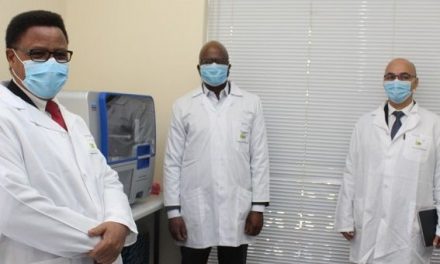
Health Ministry and CDC Namibia conduct researches on convenient and cost-effective long-term HIV care

By Clifton Movirongo.
Throughout 2020, the Ministry of Health and Social Services (MoHSS) with assistance from the U.S. Centers for Disease Control and Prevention (CDC) conducted two research studies which were released at the end of last year on how to enable Community Adherence Groups (CAGS) support patients and the cost of treating stable and unstable patients.
The former study, CAGs entailed groups of 6 to 12 HIV-positive patients who have their virus under control. The group met on a regular basis in their community.
According to the study, one of the members would visit their local clinic to collect all the medicine for the group and all members collect their medicine when they meet up later on as a group. This is done as a means to preserve the patients’ time and money.
Furthermore, several patients and healthcare providers from three regions who were interviewed from the study revealed that “many patients, being part of a CAG makes it quicker and easier for patients to receive their medication.”
“As a leader of the group, I look for topics that I think are interesting for the CAG members. Especially because I used to walk around in the community, I used to see the bad things that are happening in the community. That is what I bring up topics like discrimination,” said one CAG member from the Oshana region.
The member further explained that, “They [CAG members] suggest some talks about how to do backyard gardens, where you can produce your own food like spinach and cabbages.”
The latter study involves the comparison of the cost of care for patients who have the level of the virus under control in their body, labelled as stable patients, with the cost of care for patients who do not have the level of the virus under control, categorized as unstable patients.
Additionally, the study compared the cost of care for adults compared to teenagers and children living with HIV, moreover, the cost of care was based on the average cost of care over one year.
The research indicate the results show that the cost of care for a stable HIV positive patient is 2-3 times lower than the cost of care for an HIV-positive patient who is not yet virally suppressed.
Besides, the highest costs are for laboratory services, healthcare providers and medicine plus the study assessed the cost of patient care at nine clinics over a period of one year.
Commenting on the study, Study Co-investigator and Senior HIV Advisor for the MoHSS, Dr Ndapewa Hamunime noted that it is evident that the sooner people living with HIV get on treatment, the healthier they will be.
She added that the results of this study shows that getting patients to regularly take their medicine also has an important impact on the cost of care, particularly by reducing the number of laboratory tests that are required.
Dr Graham Mutandi, Care and Treatment Team Lead from CDC Namibia advised that, “If we help patients control the virus in their body as soon as possible, we can do less laboratory tests, reduce hospital visits and save a lot of money.”
He further explained that Namibia has 204,000 people on treatment and reducing the cost of HIV care, and still improving the quality of patient care, means that the money saved can be spent on other needs within the healthcare system.
Health Minister, Hon Dr. Kalumbi Shangula, highlighted that the lessons learned from this study are vital in informing our future resource planning.
This comes as, the ministry of health made a number of recommendations from the findings of these studies. For instance, the ministry recommends that the CAG model is expanded into areas beyond HIV alone, such as livelihood, mental health, and other chronic disease care.
For the purpose of helping HIV-positive patients become stable as quickly as possible, the ministry will continue to prioritise the roll-out of the new HIV medication, Tenofovir, Lamivudine, and Dolutegravir (TLD), which is the most effective treatment for the majority of HIV positive patients.
The ministry emphasised that it will also adopt low-cost laboratory technologies as they become available and maximise efficiencies where possible, promoting cost-effective service provision and ensuring that patient care is effective.
“The HIV program is making great strides in this direction and will continue to do so in 2021,” they concluded.













































